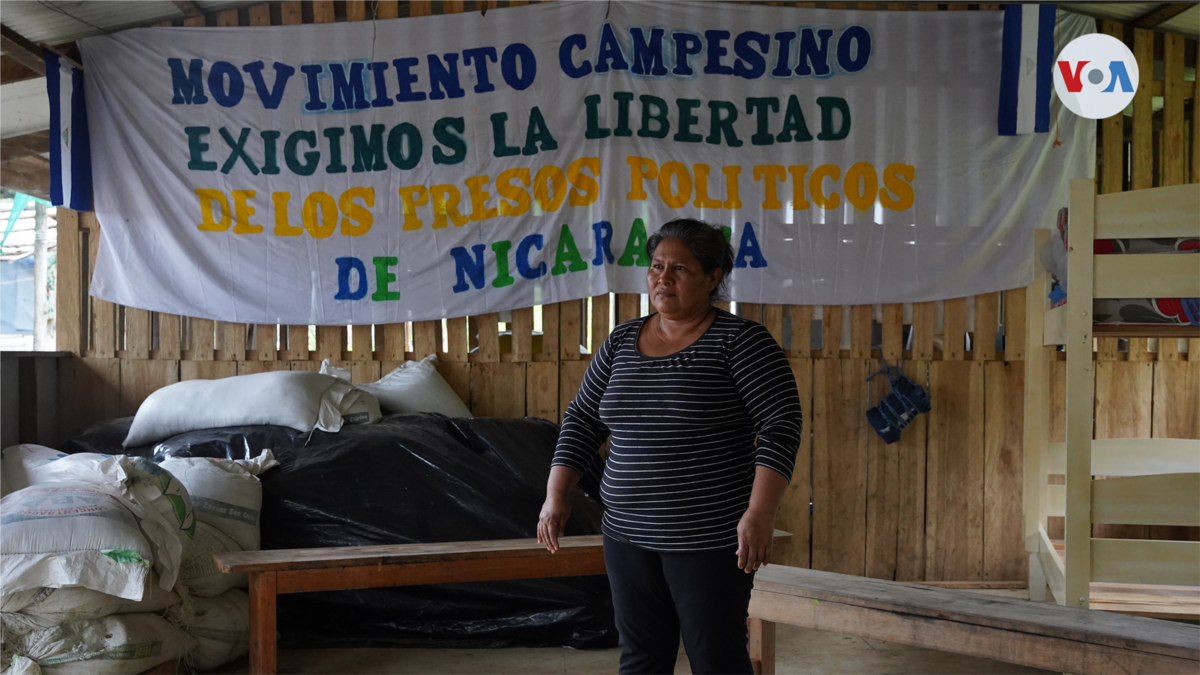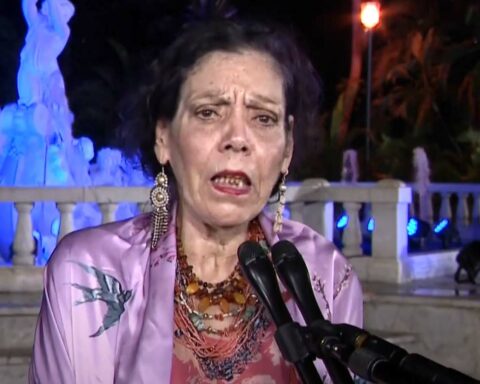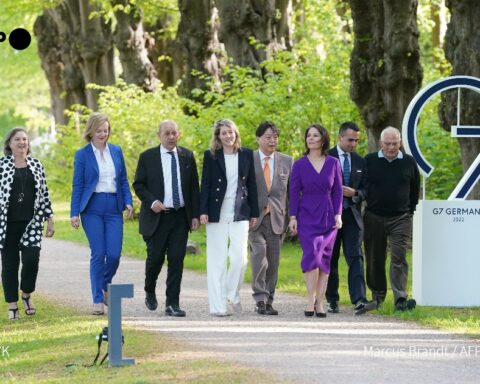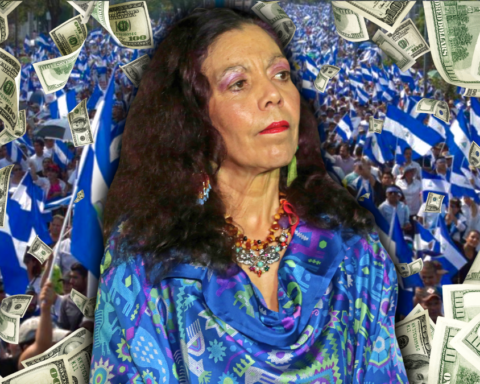The working day in the camp of Francisca Ramírez, known as “Doña Chica”, begins at 4 in the morning with the cackling of the chickens.
The kitchen stove glows in the dark of the auditorium where the dining room is located and Ramírez, a Nicaraguan peasant who forcibly displaced to Costa Rica since 2018, begins to serve food: a traditional gallopinto dish -which is prepared based on of rice and beans- with fresh curd and black coffee. “The food is ready, everyone get up to eat”, she listens to herself.
The camp that Ramírez runs is located in Upala, a border area with Nicaragua, and is made up of 117 hectares, of which 67 are occupied to live and work cultivating the land.
Some 20 families live there who, like her, say they were displaced by the government of Daniel Ortega for his critical stance of the Nicaraguan president.
The lands where these peasants, led by “doña Chica”, began to be rented about four years ago with the support of various organizations, but over time it became self-sustaining by selling various products that are made in the camp.
To settle in the place, “Doña Chica” and part of the displaced peasant families went through countless difficulties beforehand.
They spent a short time in San José, the Costa Rican capital, but they say that living in a city was the equivalent of being in jail for them.
“We peasants characterize ourselves because we like to work, produce food,” says Ramírez and recalls, for example, that when they arrived in the capital of Costa Rica “we didn’t know what we were going to eat.”
“It was difficult for us to go on sale for a pound of rice or cheese, but four years later, with the effort of more than 20 families, the effort of some cooperation organizations that have supported us and some allies, I tell you that today We can invite those who come to the quesillo, the curd, the gallopinto. We can guarantee that we have food security,” says Ramírez with emotion.
In Nicaragua, Francisca Ramírez lived in La Fonseca, Nueva Guinea, in the south of the country, where she cultivated at least 200 hectares of land inherited by her family and sold what she produced in the markets of the capital.
But around 2013, the peasant began to have problems with the Ortega government, after it signed the construction of an Interoceanic Canal with a Chinese businessman and she opposed it and signed the so-called “anti-canal movement.”
See also the VOA special: The path of the migrant
She believed that the announcement of an Interoceanic Canal would only be an excuse for the land to be expropriated by the government, as happened in the 1980s after the triumph of the Sandinista Revolution.
As a result of then, the “anti-channel movement” carried out dozens of protests against Ortega, which it says were repressed.
However, the situation became even more complicated. in 2018 when Youth demonstrations against Ortega arose and she joined in as well as the peasantry.
“The peasants were already experiencing persecution since before 2018 and when the protests arose we were already organized and that had consequences such as being more persecuted,” lamented Ramírez.
The plan of this peasant leader upon leaving Nicaragua was not to stabilize in Costa Rica. “Our goal was to return to Nicaragua but, as you know, the crisis has worsened every day because there is repression, persecution and those who raise their voices are imprisoned or disappeared, and that has forced us to remain in exile and look for some work alternative,” he says.
To survive, the peasantry that lives in the camp sows vegetables, raises pigs, cattle, which they sell and some of them kill to eat.
They also sell dairy products derived from the cows they have.
Over time, Ramírez says that this place has become a “pretty” place for them.
“It is already a place where other Nicaraguans who are having a hard time with the persecution against them, can tell us: «well, brother, I want to find some mechanism to search and that they give us a lodging», and we already welcome that family, they we help with food, they look for work”, says Ramírez.
Víctor Manuel Díaz, originally from San Miguelito, Río San Juan, is one of the parents who lives in Doña Francisca’s camp. He went into exile in Costa Rica as soon as he got out of prison in 2019, after an Amnesty Law was approved, and he says that the place is a kind of “oasis” for them, where they work on what they know how to do: cultivate the land. .
“If I returned to Nicaragua, my life was in danger and we are gradually establishing ourselves here,” says Díaz.
But even so, Ramírez and the peasants hope to return to Nicaragua, as they say, when “democracy returns and Ortega leaves power,” meanwhile they live day to day doing what they love: cultivating the land.
“I want to die on my land,” says Ramírez, adding that “even if the people suffer, let’s not lose hope and, although sometimes we believe there is no way out, there is.”
“Nicaraguans characterize ourselves as workers, wherever we work, and this way of fighting to survive is also a way of continuing in resistance with the hope of seeing change,” concludes Ramírez.
Connect with the Voice of America! Subscribe to our channel Youtube and activate notifications, or follow us on social networks: Facebook, Twitter and instagram.








